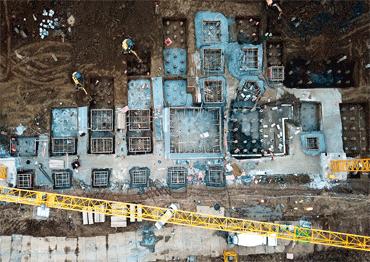Jiang Mengxi, a researcher at the National Health Commission (NHS)’s Health Development Research Center, told NewsChina that half of the country’s medical infrastructure projects this year were already planned, including specialist hospitals in underdeveloped areas of Southwest China, and hospitals to meet the needs of expanding urbanization in eastern China’s populous cities. But the rest are in response to the ongoing Covid-19 pandemic.
Construction on six major projects began on the same day in late July in Wuhan, Hubei Province, the original epicenter of the pandemic. Six new tertiary hospitals of 1,000 beds will be built in four districts, aimed at epidemic prevention, control and treatment. The combined cost of these six projects, more than 10 billion yuan (US$1.52b), is the largest investment in medical and healthcare in the city in recent years, the Wuhan Municipal Health Commission said.
“The Covid-19 pandemic taught authorities at all levels very important lessons, and we must learn from these experiences. In the 14th Five-Year Plan (2021-2025), it is vital that we spend 200 billion to 300 billion yuan (US$30.42b-45.6b) from the central to the local level of governments to fill the gaps in China’s public health system,” wrote Huang Qifan, former Chongqing mayor, in a piece in the China Economic Weekly in February 2020.
The focus is on infection departments and public health systems. According to a release from China’s top planning body, the National Development and Reform Commission (NDRC) on July 6, the central government allocated 45.66 billion yuan (US$6.95b) to the national health budget for 2020 to strengthen capacity-building in public health disease prevention, control and treatment.
“I’m sure this round of investment has to be much bigger than after the SARS outbreak,” said Zhao Wei, former head of Nanjing No.2 Hospital, Jiangsu Province. Zhao told NewsChina that the province built several new hospitals for infectious disease treatment after the SARS (severe acute respiratory syndrome) epidemic of 2003. But this time the spending is much greater. Compared to the infrastructure investment of 400 million yuan (US$60.84m) in Suzhou No.5 People’s Hospital, the budget this time for a new negative pressure ward building alone is 800 million yuan (US$121.7m).
After the SARS epidemic, local governments tried to improve public health provision. But because some infectious disease hospitals were moved to remote locations and there are fewer patients with infectious diseases, these hospitals were operating at low capacity. For example, No.3 People’s Hospital of Yangzhou, the designated infectious diseases hospital of the city in Jiangsu, relocated to a new site in 2008, but it treated less than 100 outpatients daily for the first three years, lower even than a small community clinic in urban areas. A few years ago, the public health center for infectious diseases in Hohhot, capital of Inner Mongolia Autonomous Region, was dismantled because it saw few patients but cost hundreds of millions of yuan annually to run.
“At present, there is no need to establish new specialist infectious disease hospitals at scale. It is important to transform existing infectious disease hospitals into general hospitals and strengthen their comprehensive treatment capacity,” Wang Guiqiang, chairman of the Infectious Diseases Branch of the Chinese Medical Association and director of the Infectious Diseases Ward of No.1 Hospital of Peking University, told NewsChina.
Construction of infectious disease hospitals or wards adapted to “both times of peace and times of crisis” is the basic requirement for all such infrastructure post-pandemic. President Cheng Junping of Suzhou No.5 People’s Hospital acknowledged to NewsChina that apart from simple hardware input, there must be subsequent sustainable, high-quality development and training of medical professionals, but there is still a question mark over how this can be achieved.
Wang Guiqiang suggested that a mechanism is needed so personnel from several departments and disease control departments can interact. That is to say, doctors are also public health experts and have the right to advise on government decisions.

 Old Version
Old Version


